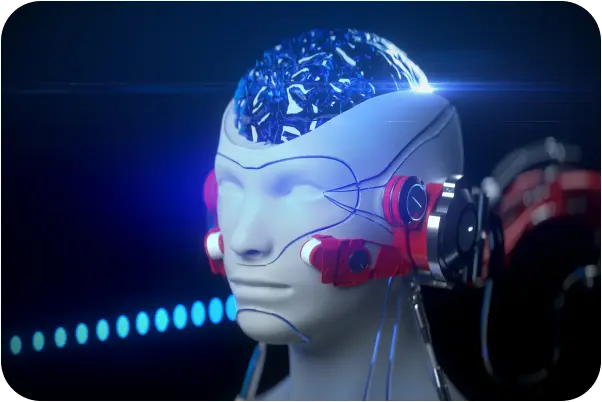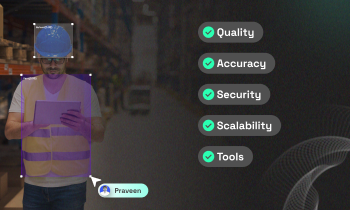How do in-car speech datasets address rare event and edge-case data?
Speech Recognition
In-Car AI
Edge Cases
In the dynamic field of automotive AI, accurately interpreting speech amidst complex and unpredictable environments is essential. In-car speech datasets are crucial in addressing rare events and edge-case scenarios, ensuring AI systems perform reliably under a variety of driving conditions. This discussion will delve into how these specialized datasets enhance model performance, tackle unique challenges, and offer valuable insights for AI engineers and product managers.
The Importance of Handling Rare Events
Vehicles navigate through inherently noisy and unpredictable environments. Background noises from engines, traffic, and weather can significantly disrupt speech clarity, challenging common Automatic Speech Recognition (ASR) models. In-car speech datasets are meticulously curated to encompass both typical interactions and rare, unexpected utterances. This comprehensive approach is vital for developing robust models capable of understanding commands in real-world scenarios.
Enhancing Voice Recognition Systems with In-Car Speech Datasets
To reflect the complexities of in-car environments, data is collected from diverse driving conditions, including urban, highway, and rural settings. Recordings capture spontaneous dialogues, command utterances, and emotional responses from multiple speakers in various seating positions. Notably, edge cases are integrated through:
- Diverse Acoustic Conditions: Recordings are made with windows open or closed, air conditioning on or off, and varying levels of background music.
- Speaker Variability: Contributions from different demographics, including children, ensure a broad spectrum of speech patterns and emotional tones.
- Microphone Placement: Various mic configurations, dashboard-mounted or near headrests create a rich diversity of sound profiles, simulating different real-world scenarios.
Real-World Impacts & Use Cases
Addressing rare events with in-car datasets is crucial for user satisfaction and safety. For instance, an autonomous taxi service can train speech recognition systems to handle unexpected commands from passengers in heavy traffic. In-car datasets allow developers to fine-tune models by providing samples that include urgent commands or emotional responses, critical for user satisfaction and safety.
A luxury EV brand successfully trained a multilingual voice assistant using 500 hours of spontaneous in-car speech data. This dataset included unique edge-case scenarios, such as commands issued during intense conversations or unexpected traffic conditions, enhancing the assistant's ability to respond accurately.
How Top Teams Approach the Problem
To effectively utilize in-car speech datasets for robust AI model training, consider these strategies:
- Prioritize Diversity: Ensure datasets cover a wide range of speakers, languages, dialects, and emotional tones. This diversity is essential for generalizing across various user interactions.
- Integrate Edge-Case Scenarios: Actively include recordings of rare events such as urgent commands or emotional responses to prepare models for real-world variability.
- Use Comprehensive Annotation: Employ detailed metadata tagging to enhance the training process. Annotations should capture speaker role, environmental noise levels, and the context of each utterance, aiding in model performance analysis.
- Benchmarking and Evaluation: Regularly evaluate model performance using metrics like Word Error Rate (WER) and intent detection accuracy, especially under edge-case conditions. This helps identify weaknesses and areas for improvement.
Future Trends in In-Car Speech Datasets
As AI technology advances, in-car speech datasets will continue to evolve. Future trends include:
- Multi-Agent Systems: Datasets will support systems capable of handling interactions with multiple passengers, enhancing conversational flow in autonomous vehicles.
- Emotion-Rich Data: As emotion detection becomes more critical, datasets will increasingly focus on capturing nuanced emotional responses, allowing AI systems to react appropriately.
- Federated Learning: Techniques will emerge to personalize voice recognition systems by integrating real-time user feedback, improving accuracy through continual learning.
Building the Future of Automotive AI
As you embark on your AI projects, understanding how in-car speech datasets address rare events and edge cases is key to developing successful voice-enabled applications. Leveraging these specialized datasets allows organizations to create AI systems that perform well under standard conditions and thrive amidst real-world complexities.
To optimize your AI initiatives, consider FutureBeeAI’s robust data solutions that offer both ready-to-use and custom-built datasets tailored to your specific needs. Embrace the power of high-quality in-car speech datasets to enhance your AI's capabilities and drive user satisfaction.
What Else Do People Ask?
Related AI Articles
Browse Matching Datasets
Acquiring high-quality AI datasets has never been easier!!!
Get in touch with our AI data expert now!








